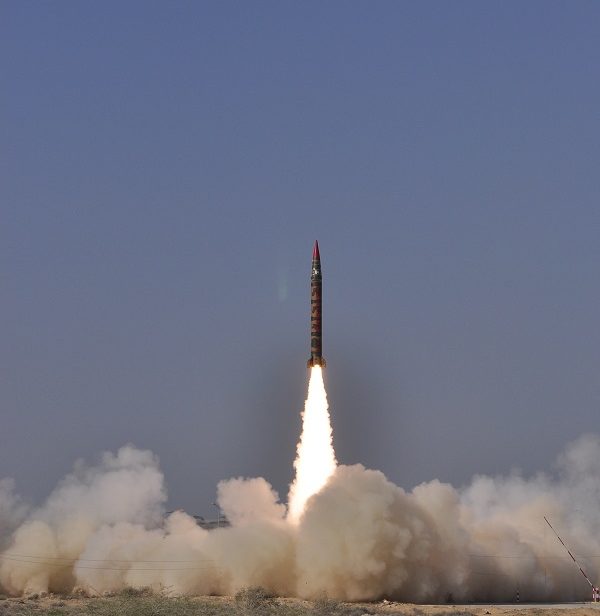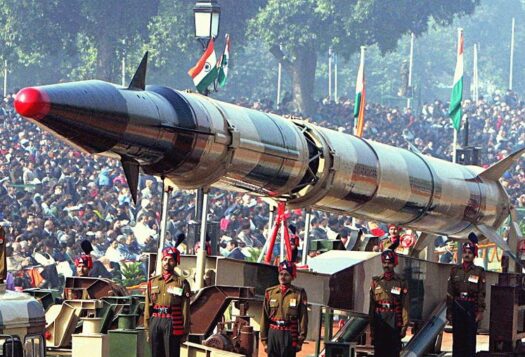
“Nations plan for war not by listening to their rivals’ commitments but by looking at their capabilities.”-Josef Joffe
The debate on nuclear First Use (FU) and No First Use (NFU) is as old as the Bomb itself. It formally started when the United States adopted the policy of FU from the onset of the Cold War, especially in the early 1950s. First Use policy is adopted by a state to make its deterrence more credible, keeping in mind the prevailing challenges to the national security of a state in the strategic environment as well as one’s relevant superiority or inferiority in this context. The case of Pakistan’s reliance on a FU option is no different. Pakistan’s nuclear program aims at thwarting adversaries’ (mostly India’s) conventional and potential nuclear attacks. Owing to its conventional inferiority in comparison to India, Pakistan’s decision to retain nuclear FU makes its deterrence credible, a dynamic that helps to avoid any adventurism by the aggressor. In this vein, in order to comprehend Pakistan’s rationale of nuclear FU effectively, it is essential to skim through the historical background of the doctrine, and especially the debate between the ‘Gang of Four’ and ‘Four Horsemen.’
In the early days of the Cold War, the United States enjoyed conventional military superiority over the Kremlin. In fact, the United States was able to deter any aggressor with the help of its advanced conventional forces without necessarily using nuclear weapons. Despite this, the United States relied on the policy of nuclear FU. This is because of two reasons as stated by Dr. Zafar Khan in his book, Pakistan’s Nuclear Policy-A Minimum Credible Deterrence. First, indeed the United States and North Atlantic Treaty Organization (NATO) did not require the FU option, but due to the need of making the United States’ security assurances and guarantees to its allies credible, the United States had to retain the FU option. Second, adoption of the FU policy option by the United States could have increased its vulnerability against possible chemical and biological attacks from adversaries.
Opponents of the FU option, as described by Dr. Zafar Khan in his book, and especially the ‘Gang of Four,’ wrote in favor of NFU on the following grounds:
1) It would lessen the probability of all-out nuclear war in a war-like situation.
2) It would allow the United States and NATO to focus more on the modernization and advancement of conventional forces for the purpose of retaliation.
3) The United States could retain an option of ‘no early first use’ that would not mean U.S. departure from its security assurances to its allies.
However, the proponents of FU were of the view that U.S. policies of massive retaliation, flexible response, and assured destruction remained successful in maintaining the credibility of U.S. deterrence as well as security assurances against Soviet conventional and nuclear forces. Having said this, Pakistani security planners decided to adopt a FU policy option after analyzing the Cold War debate on FU and NFU, wherein the proponents of NFU failed to convince the United States to renounce FU policy. Pakistan adhered to a FU option to make its minimum deterrence credible due to its conventional weakness in comparison to India. Similarly, according to a Pakistani nuclear security establishment, a quest to ensure credible deterrent is also a major factor in Pakistan’s refusal to sign a ‘no-first strike’ pact with India.
Pakistan’s ambiguous position of first use as a last resort, on the one hand, shows caution and a tendency of Pakistan to not use these weapons. On the other hand, the issue of proximity, conventional weakness, and fear of pre-emption from Indians are some key reasons that restrict Pakistan to maintaining a FU option. Besides historical enmity and four wars between South Asia’s nuclear states, India and Pakistan, the Kashmir dispute is one of the more critical reasons that make Indo-Pak relations intense. Moreover, India’s proactive response plans under its Cold Start doctrine (CSD), like that of Operation Parakram, increase the probability of nuclear war in the region.
India’s conventional war-fighting doctrine, CSD, was first presented in April 2004 by the then Indian Chief of the Army Staff, “which aims at launching a retaliatory conventional strike against Pakistan that would inflict significant harm on the Pakistani Army before the international community could intercede, and at the same time, pursue narrow enough aims to deny Islamabad a justification to escalate the clash to the nuclear level,” Watler C. Ladwig III quotes in his article, “A Cold Start for Hot War? The Indian Army, New Limited War Doctrine.” Covering the justification on the failure of Operation Parakram and salient parameters of the Cold Start doctrine, the author prescribed the perceived advantages of this doctrine to India. However, he remained rational to some extent while describing the implications of this doctrine by providing that, “As the Indian military enhances its ability to implement Cold Start, it is simultaneously degrading the chance that diplomacy could diffuse a crisis on the subsequent.”
This is especially true in light of Pakistan maintaining the option of using tactical nuclear weapons (TNWs), because of its conventional inferiority when its national security is threatened. This is also evident from Pakistan’s Foreign Secretary Aizaz Ahmad Chaudhry’s recent statement: “Pakistan is fully capable of answering any aggression from India as it has developed ‘short-range tactical nuclear weapons’.” He further stated, “Pakistan knew how to show India the right path as it has developed small tactical nukes to convert any ‘adventure into misadventure.’” In fact, it could be inferred from Pakistan’s ambiguous policy of FU as a last resort that Pakistan follows a policy of no-early first use like that of the United States to achieve its political and military goals. In sum, FU policy is inherent to Pakistan’s deterrence assumption and therefore essential for Pakistan’s national security in the contemporary strategic environment.
***


